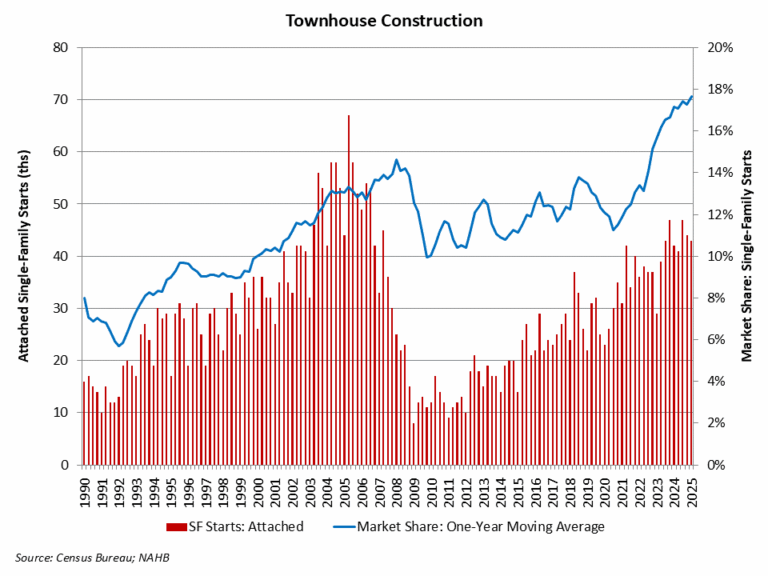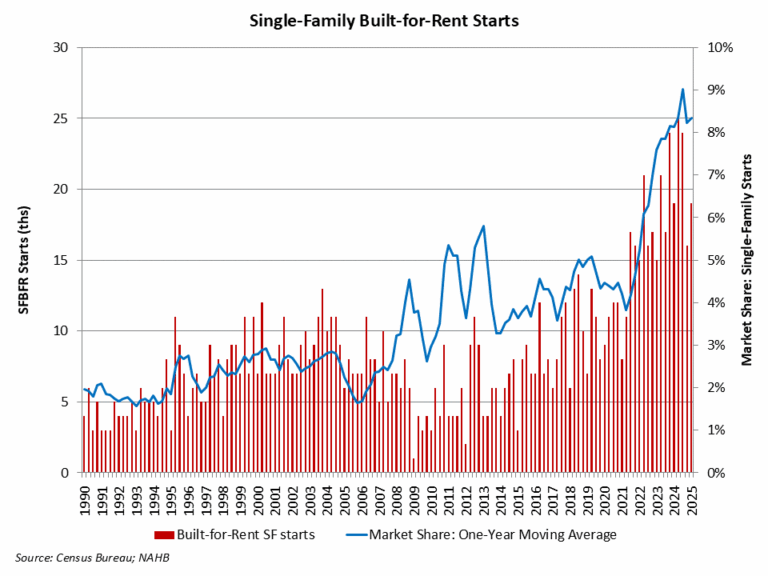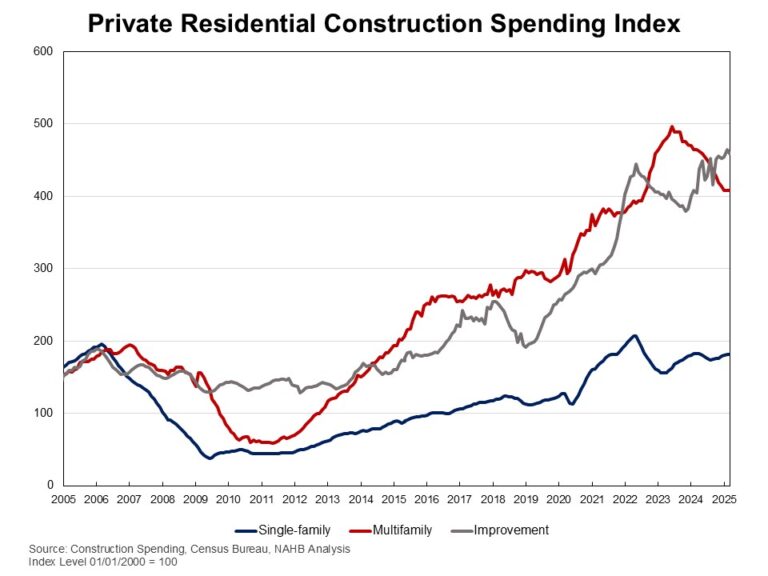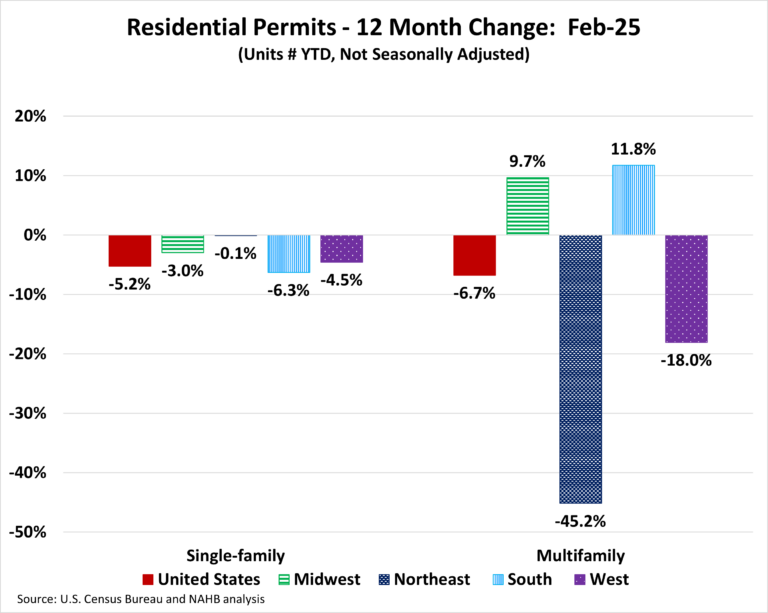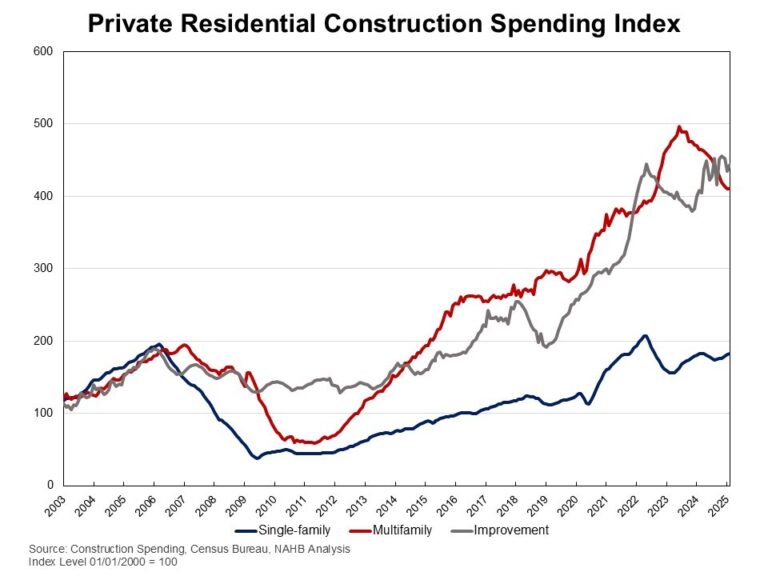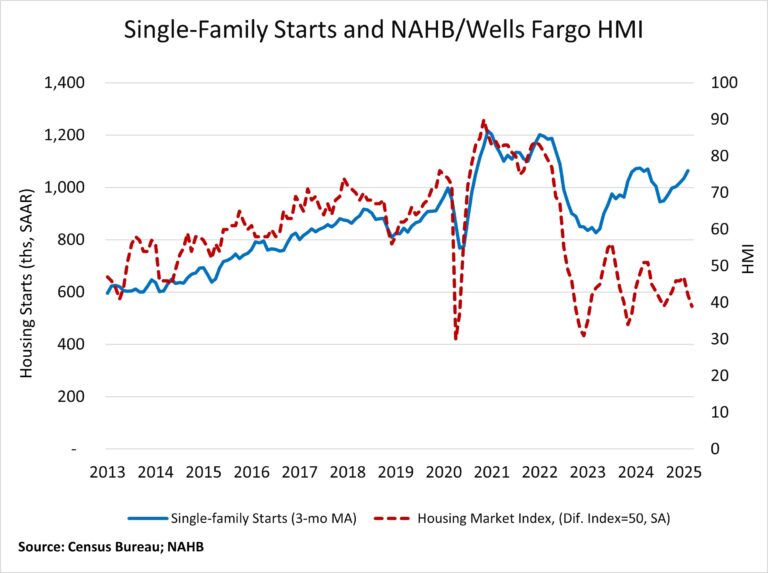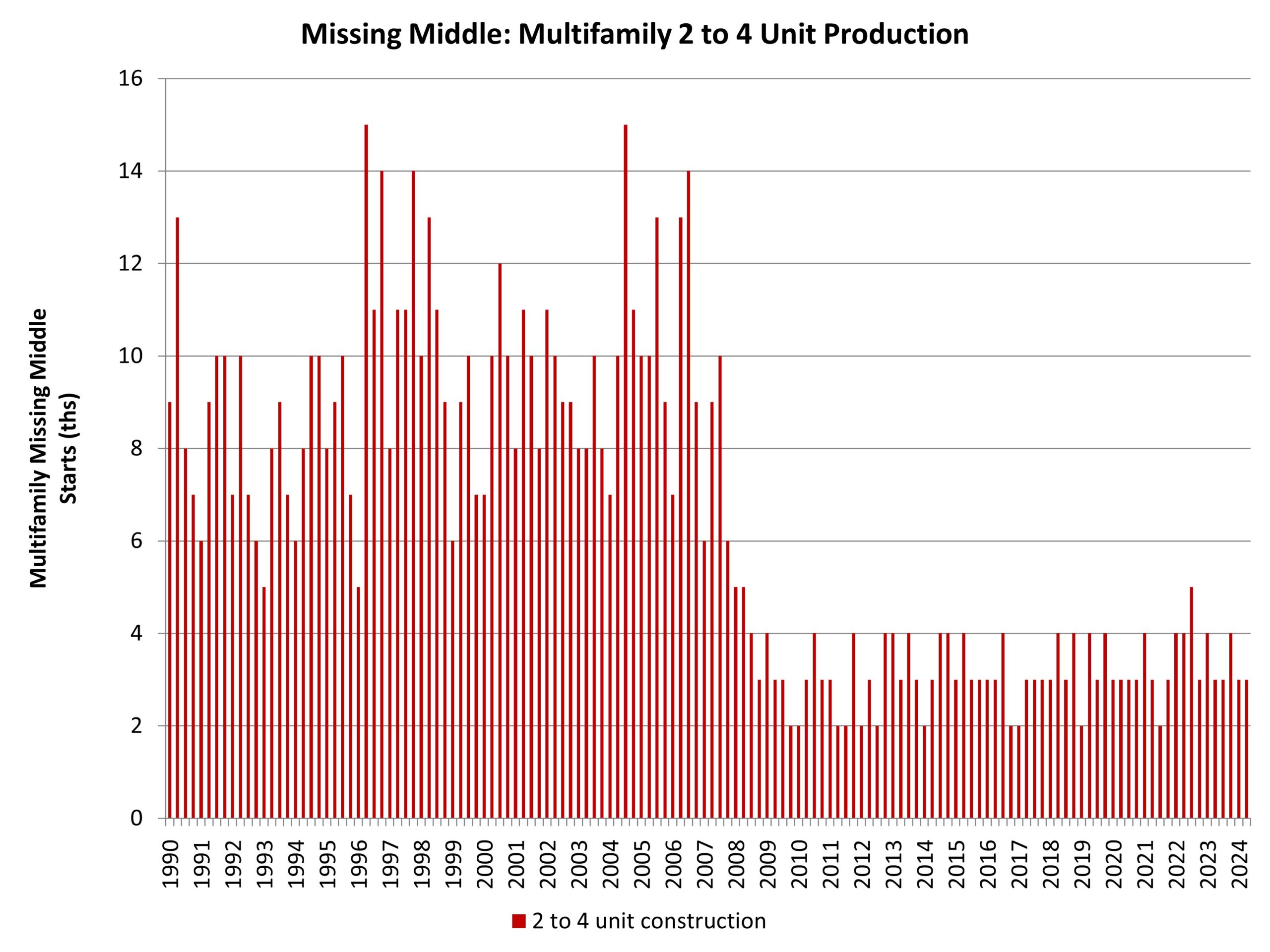Townhouse construction expanded more than 2 percent on a year-over-year basis per data from the first quarter of 2025.
According to NAHB analysis of the most recent Census data of Starts and Completions by Purpose and Design, during the first quarter of 2025, single-family attached starts totaled 43,000. Over the last four quarters, townhouse construction starts totaled a strong 175,000 homes, which is 2% higher than the prior four-quarter period (171,000). Townhouses made up 19% of single-family housing starts for the first quarter of the year, near a data series high.
Using a one-year moving average, the market share of newly-built townhouses stood at 17.6% of all single-family starts for the first quarter. With recent gains, the four-quarter moving average market share is the highest on record, for data going back to 1985.
Prior to the current cycle, the peak market share of the last two decades for townhouse construction was set during the first quarter of 2008, when the percentage reached 14.6% on a one-year moving average basis. This high point was set after a fairly consistent increase in the share beginning in the early 1990s.
The long-run prospects for townhouse construction are positive given growing numbers of homebuyers looking for medium-density residential neighborhoods, such as urban villages that offer walkable environments and other amenities. Where it can be zoned, it can be built.
Discover more from Eye On Housing
Subscribe to get the latest posts sent to your email.
This article was originally published by a eyeonhousing.org . Read the Original article here. .
